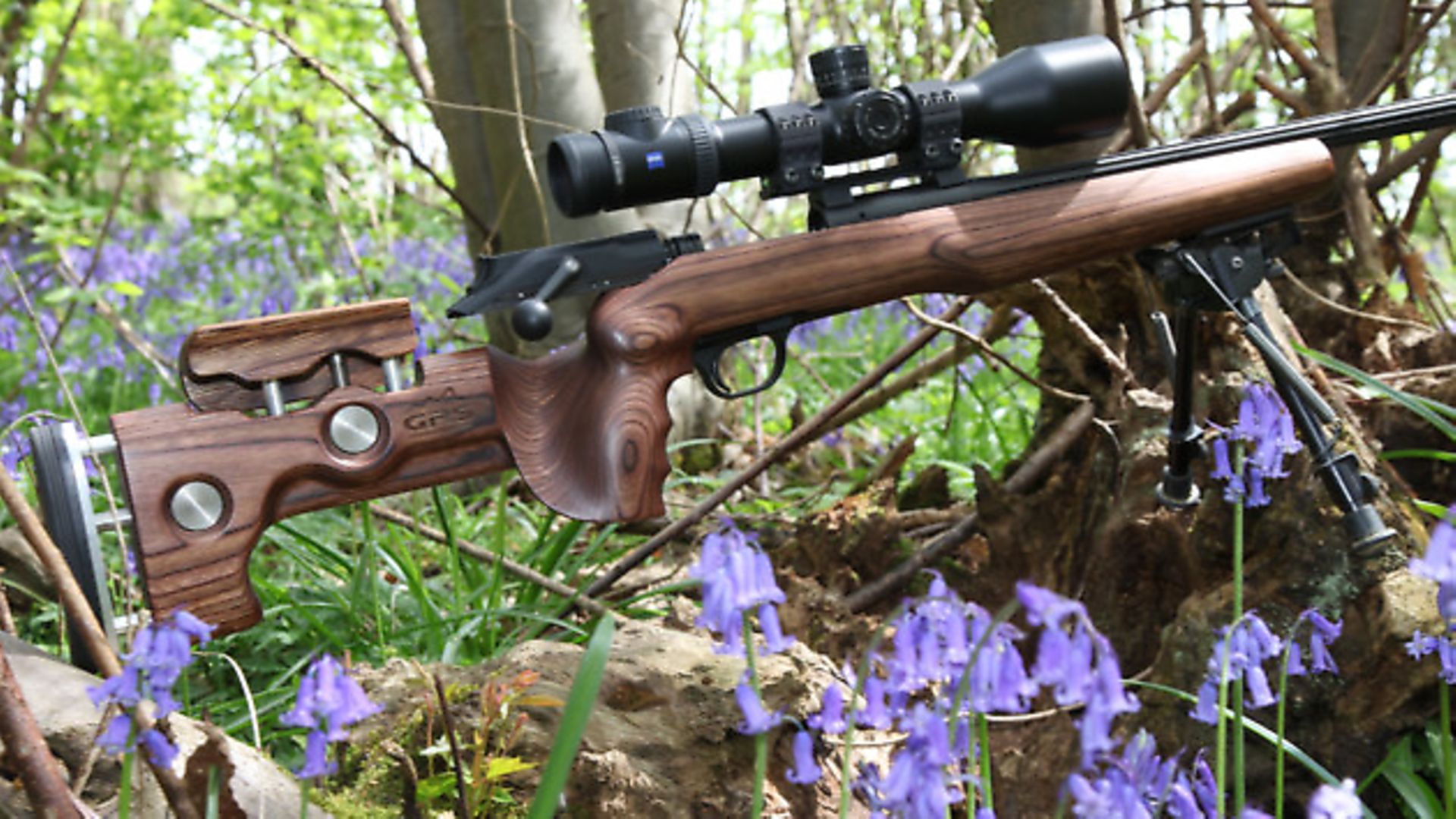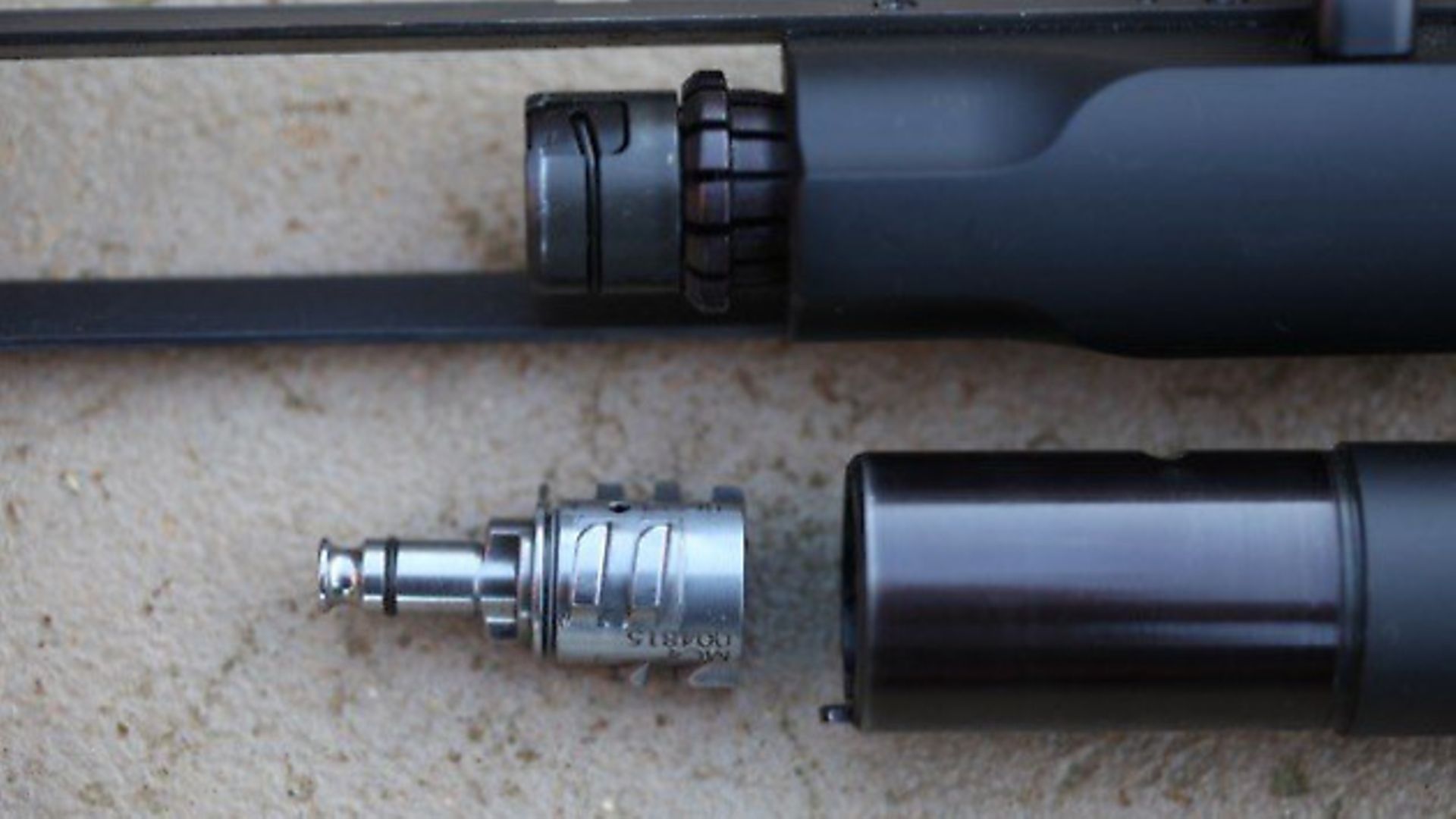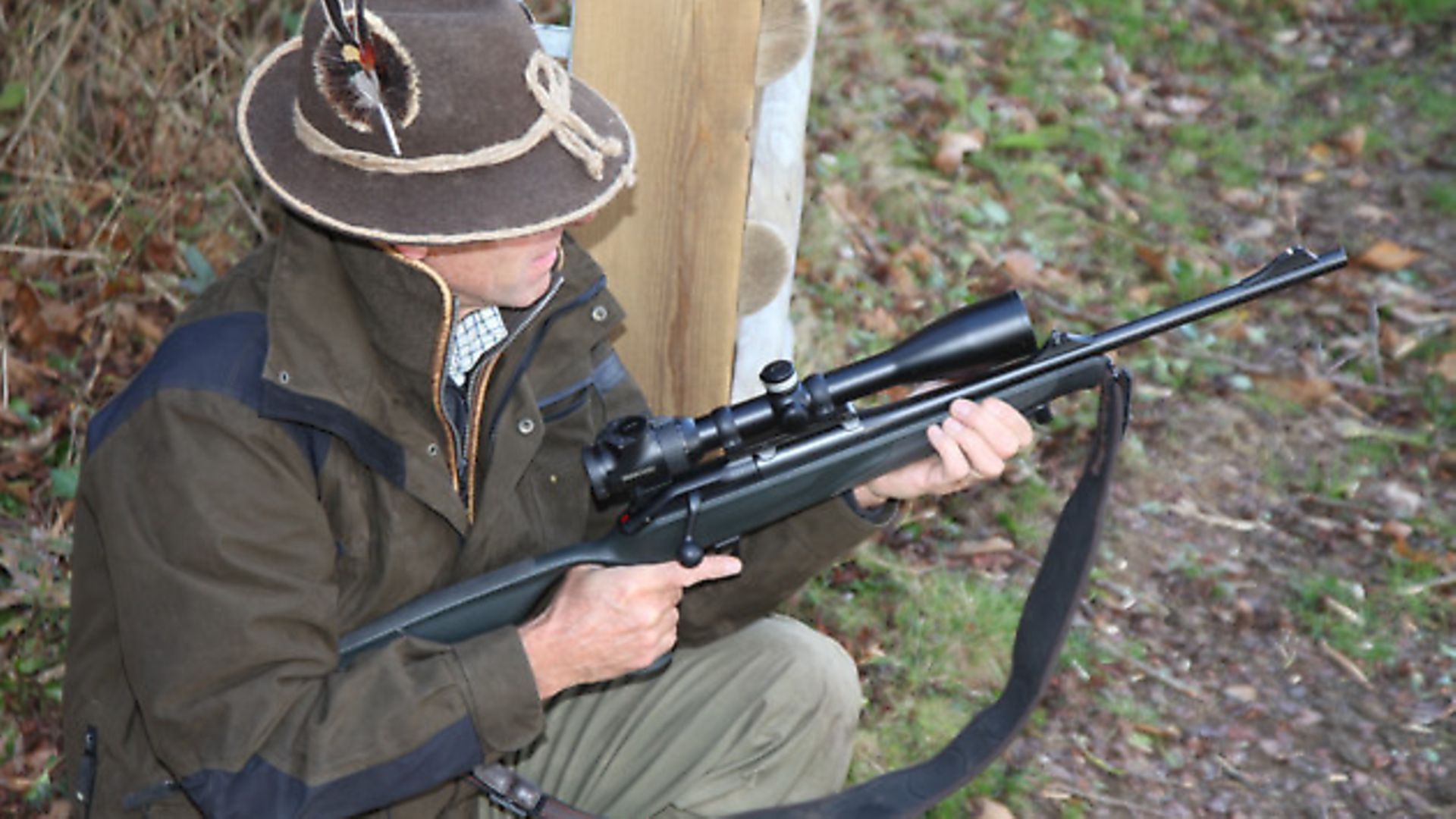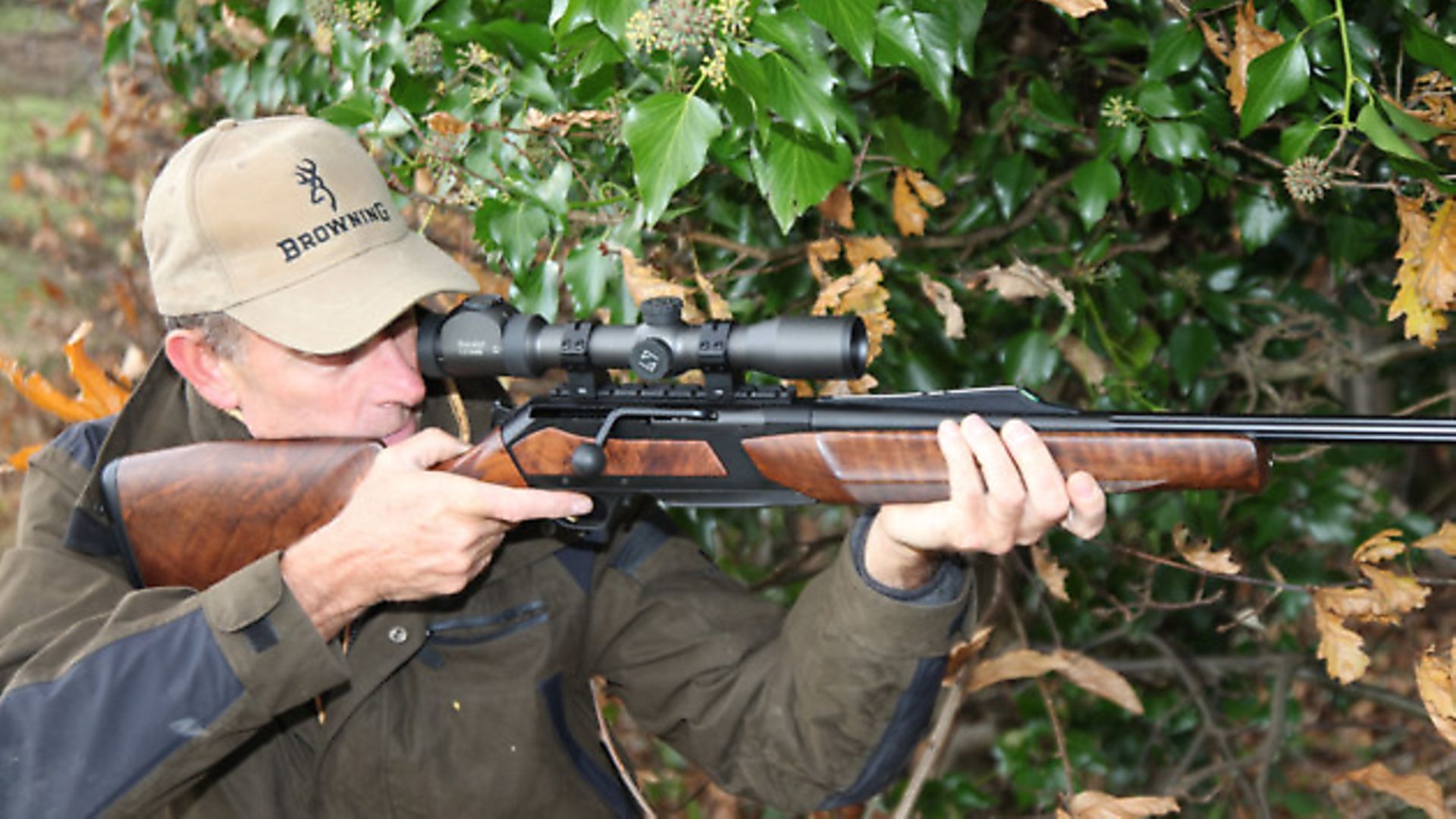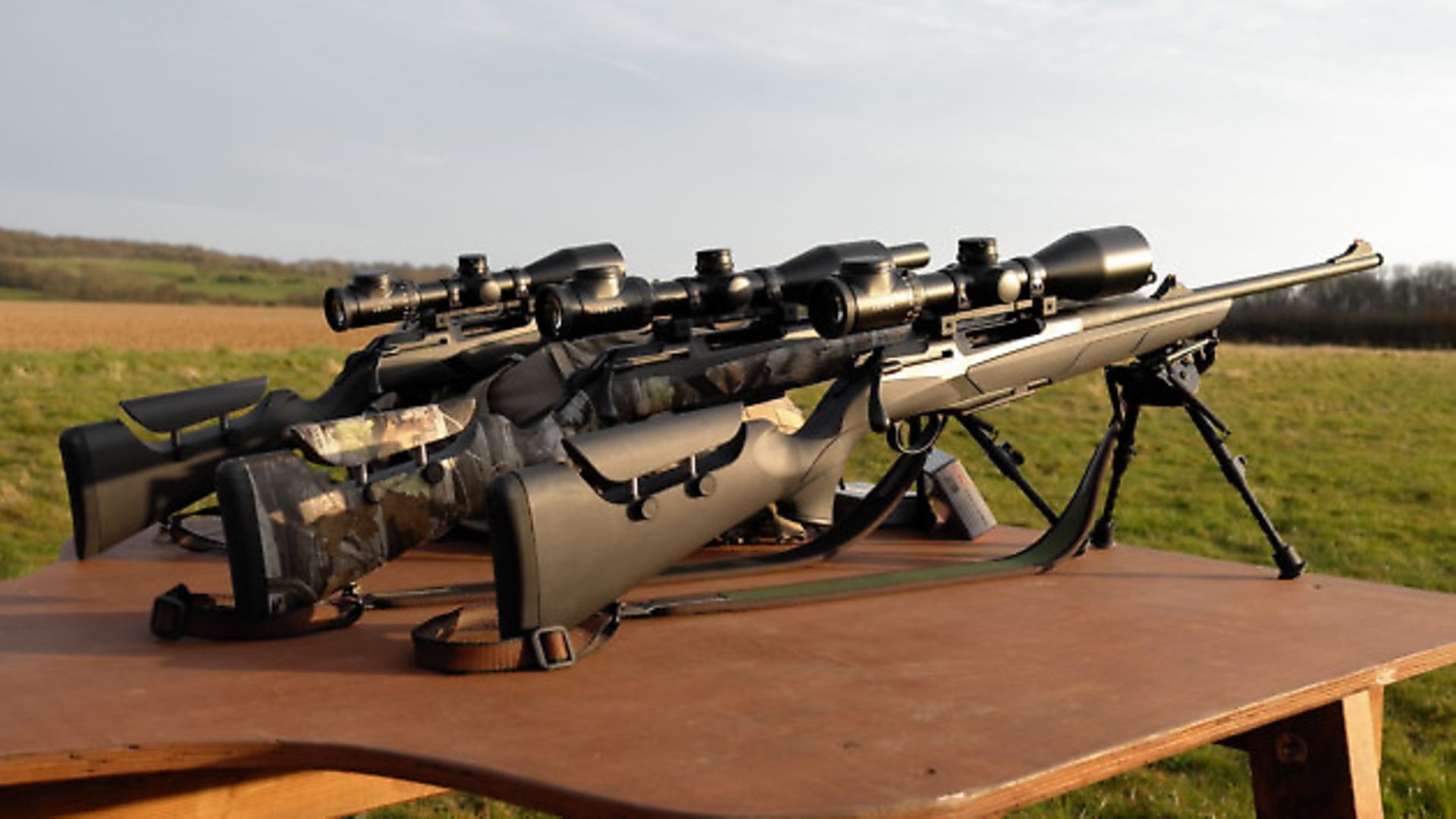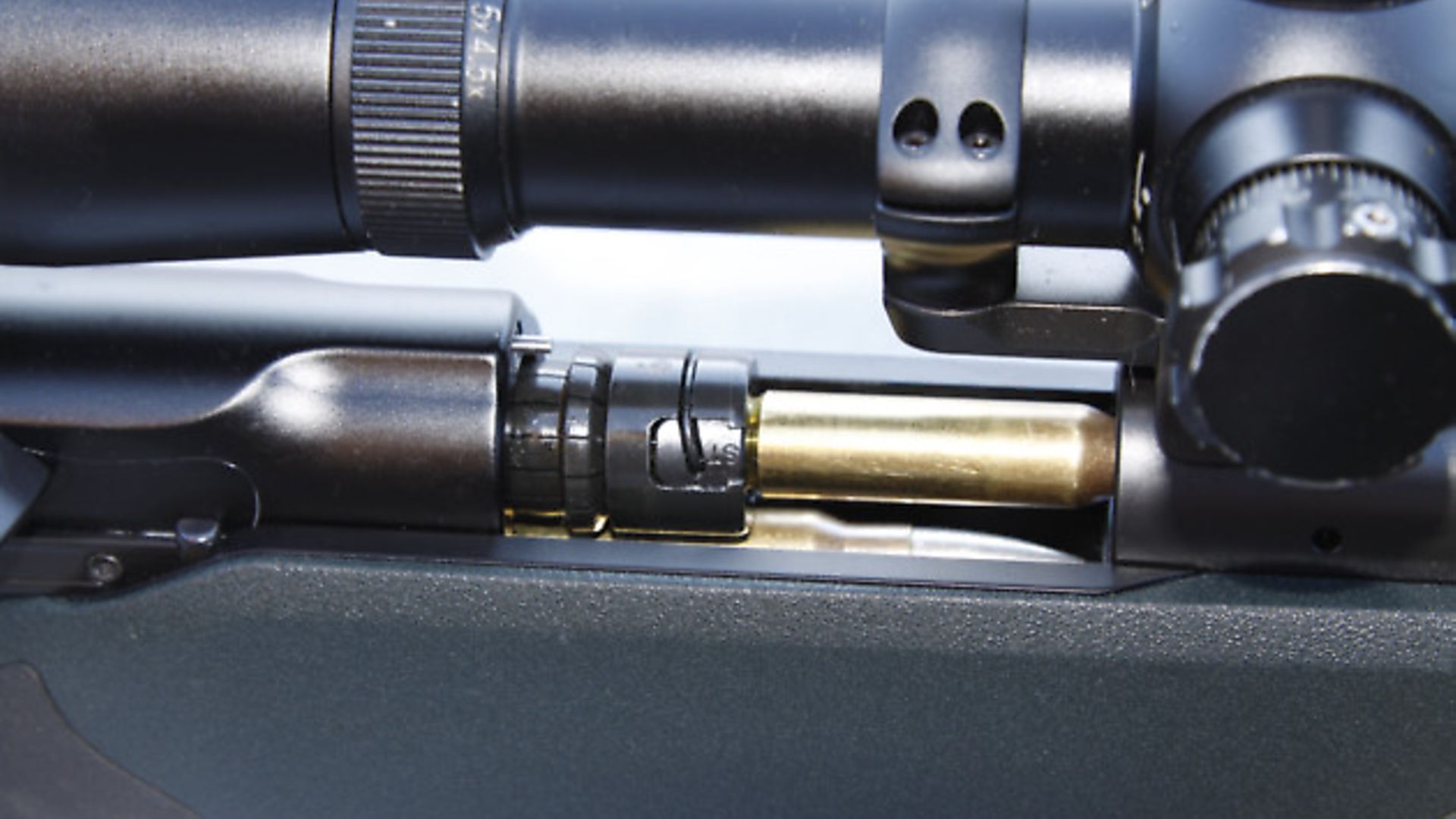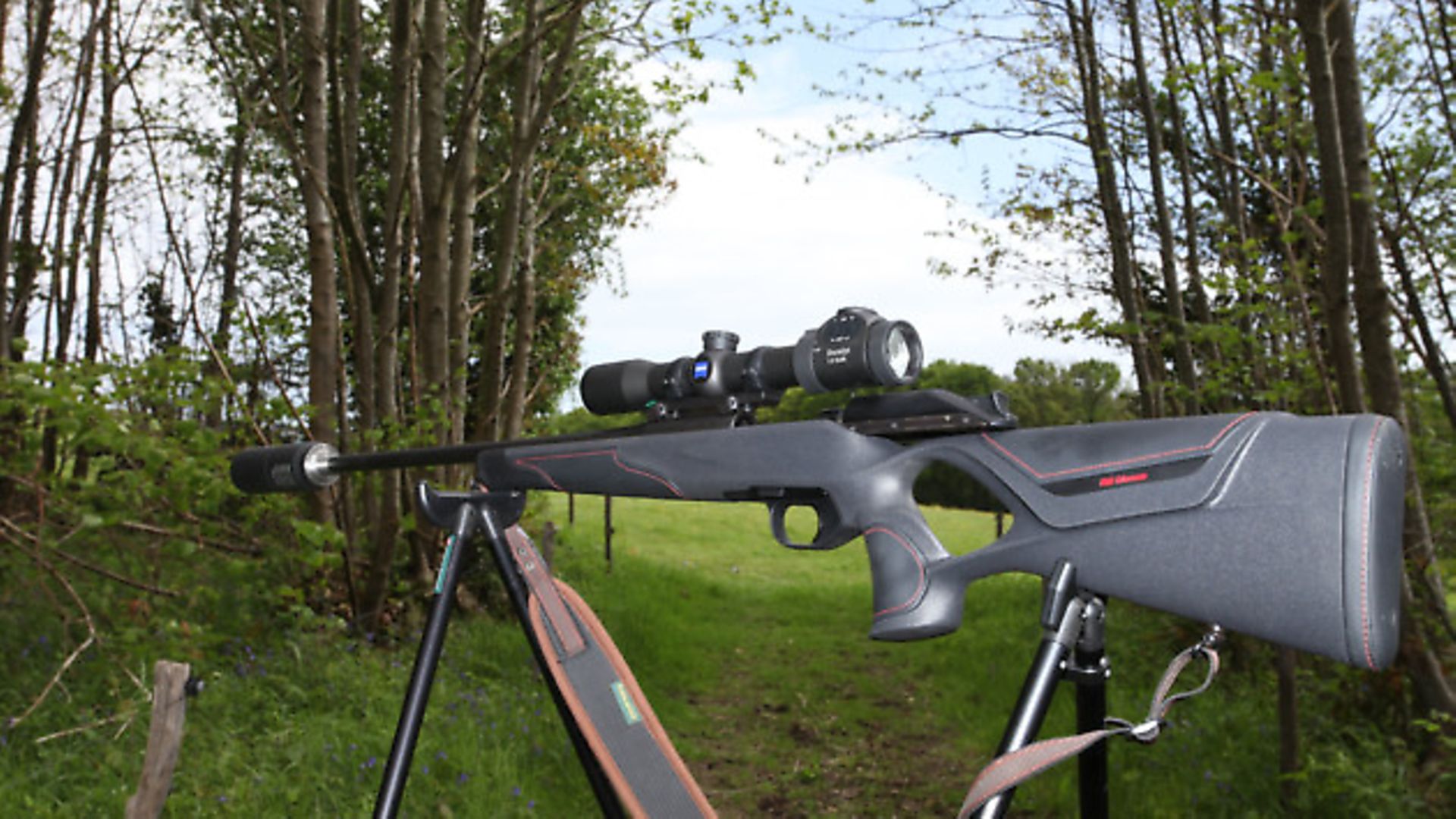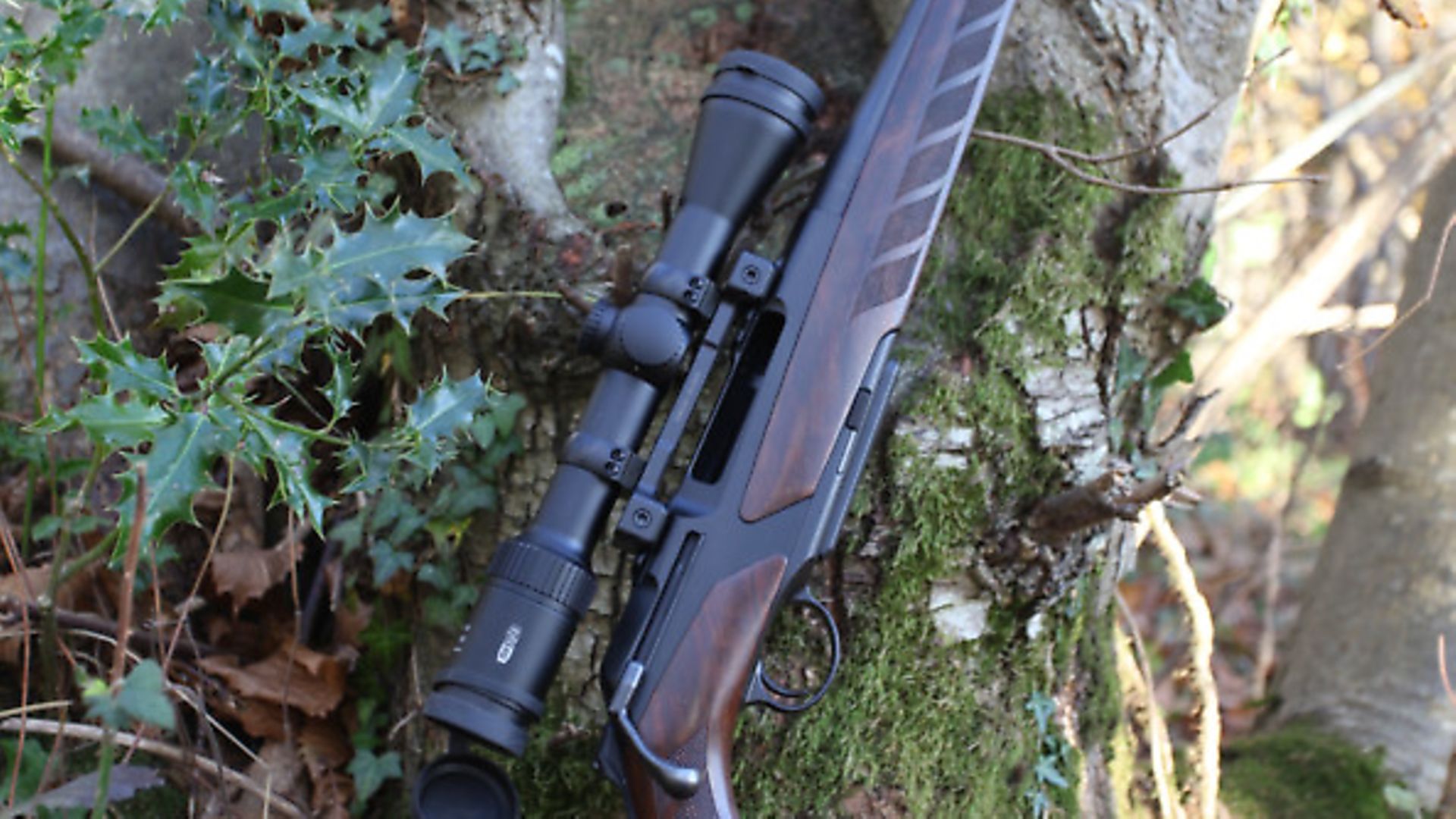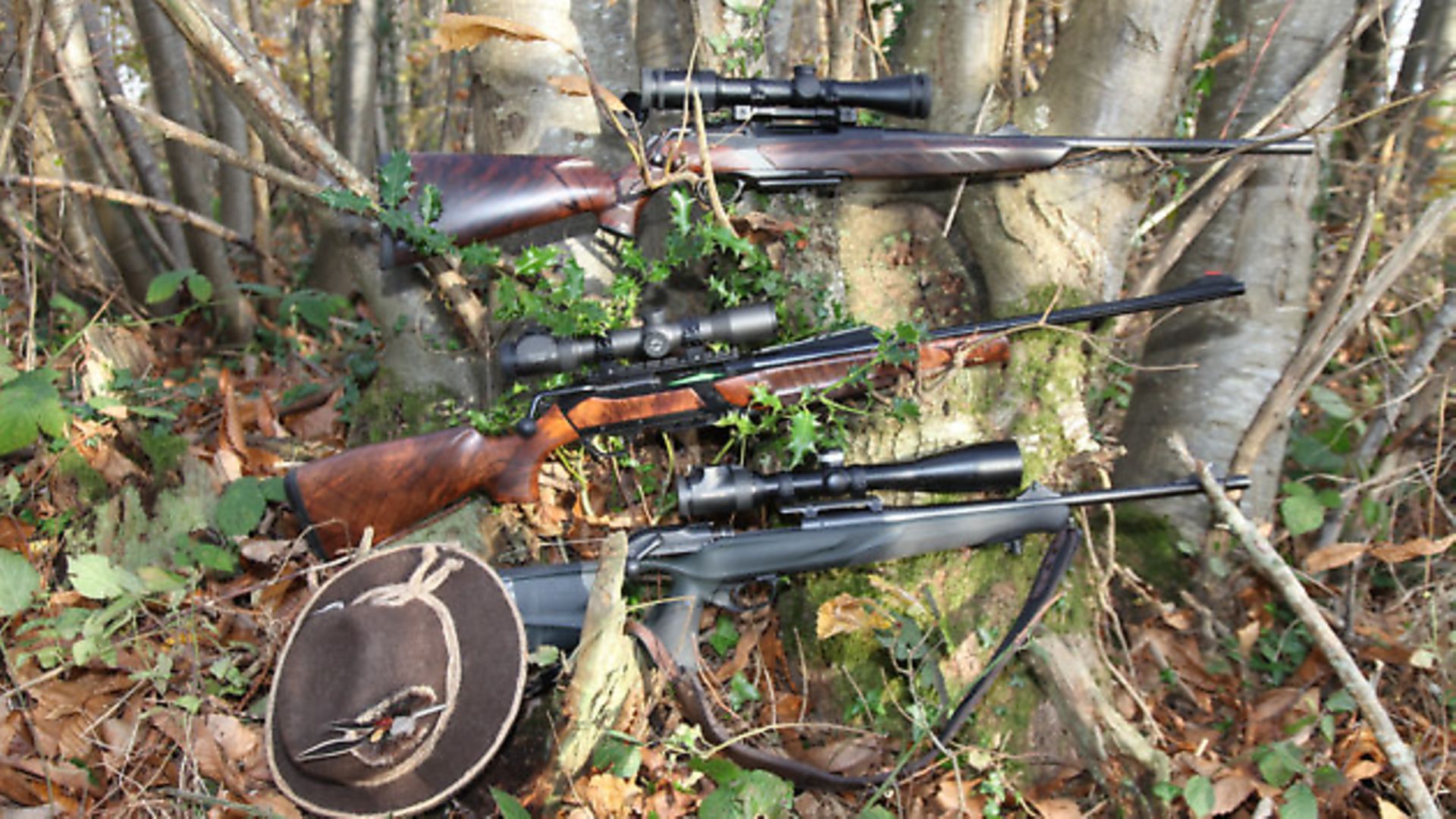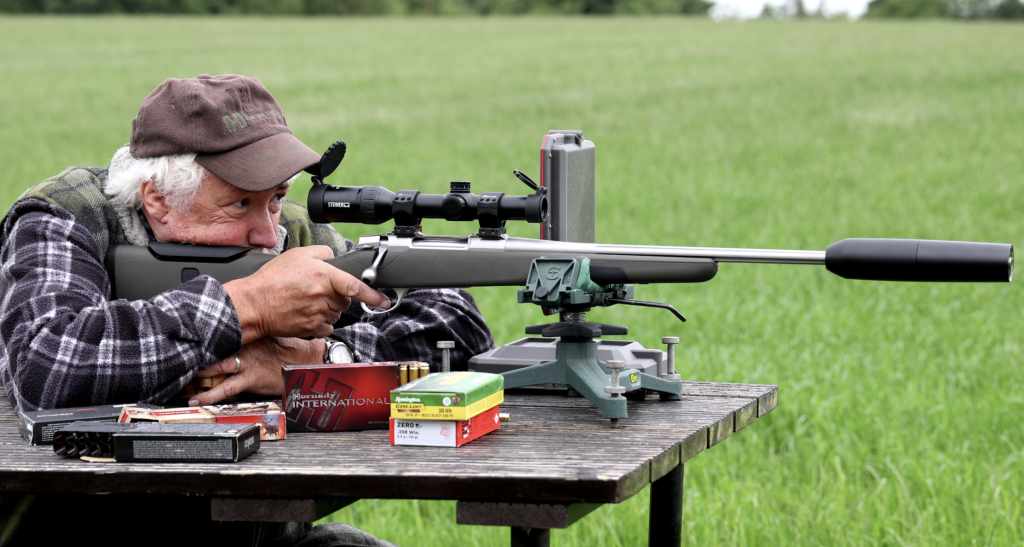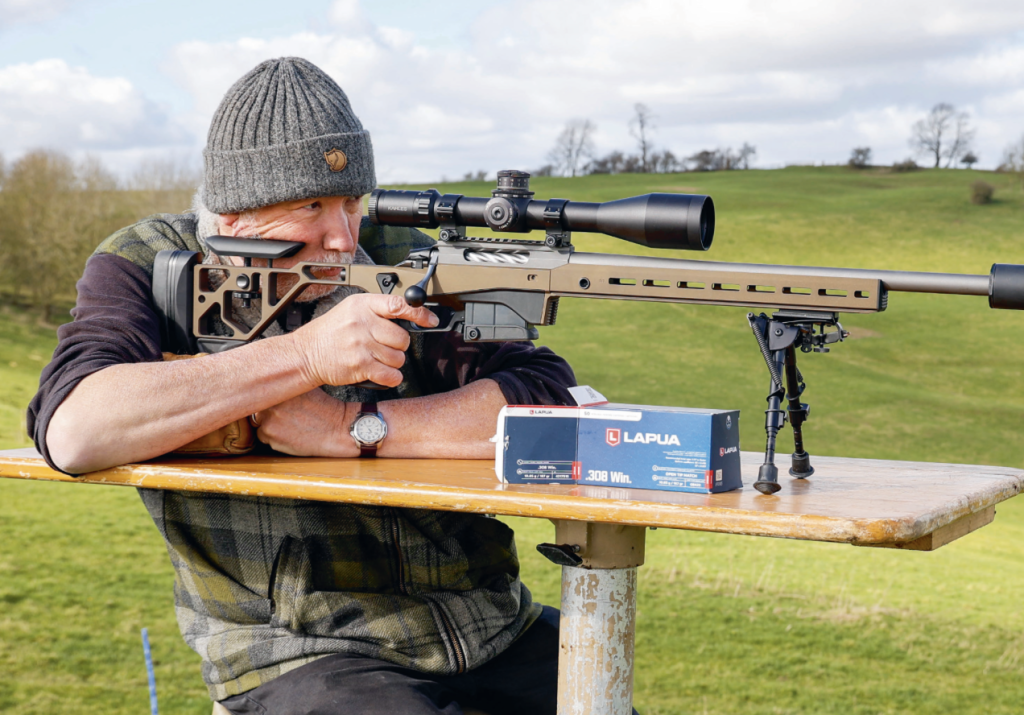Straight pull rifles – in depth analysis of three popular straight pulls
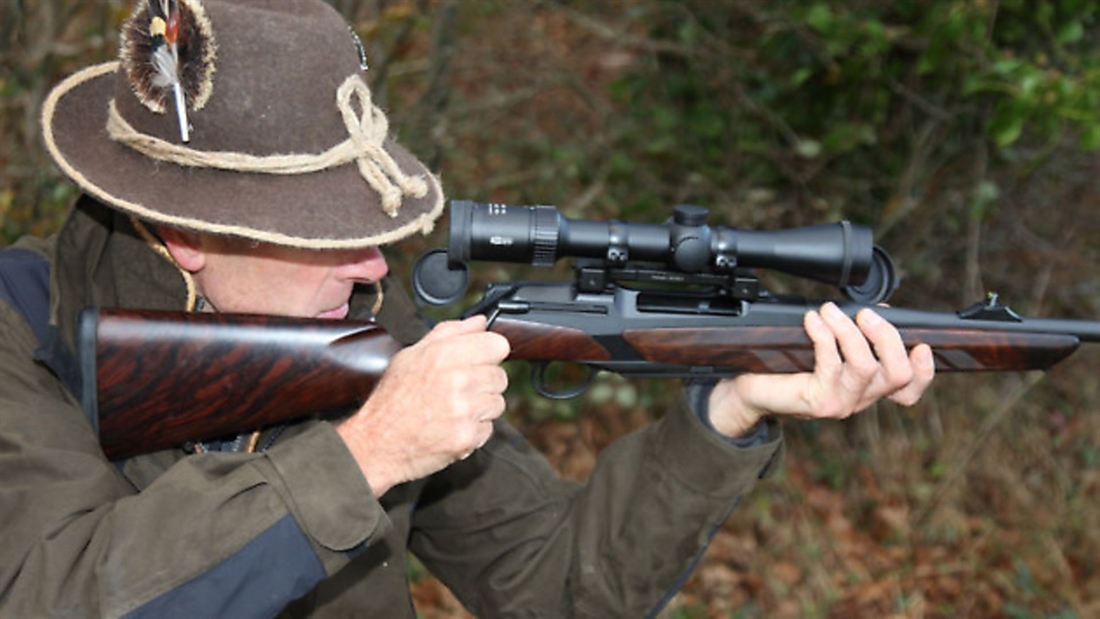
Tim Pilbeam looks at three of the most popular straight pull rifles – the Merkel Helix, Browning Maral, and Blaser R8 – and asks; are they necessary for UK hunters?
CLICK on the document to the right for an ‘at a glance’ comparison of the Merkel Helix, Browning Maral and Blaser R8.
THE IN DEPTH DISCUSSION…
Why own a straight pull? Compared to the traditional turn bolt they are much more expensive and complicated. Unless you are lucky enough to take part in a driven hunt, what is the attraction? Are they a product of wealthy European hunters always demanding the best, driven by their need to embrace technology? Some would disagree with the perception that straight pulls are faster at processing second and successive shots. After watching the famous Franz Albrecht in the earlier Wild Boar Fever videos, knocking down numerous boar with his tricked-up bolt-action rifle, who needs a straight pull? I know there is a surge of interest in driven rifle shooting in Europe and Scandinavia, predominantly due to a population explosion of wild boar, so why do we buy them if we are predominantly deer stalkers? Is it justifiable or is it, in the words of my shooting pals, ‘the man who dies with the most toys wins!’.
The cycling of a centrefire straight-pull bolt is linear – simply pull back and push forward – but locking the bolt to stop it being driven rearwards as the round is ignited is not as simple as a traditional rifle design, hence they are more expensive. The turn bolt requires four movements to cycle a round – back and forth and up and down – and it is this twisting effect of the up/down movement that the engineers are trying to eliminate, making the rifle much more stable. On most rifles it is this twisting on a turn bolt that is often the stiffest movement, as it is locking and unlocking the round.
With practice, a straight pull can help maintain a more consistent sight picture when quickly cycling rounds, and therefore, in theory, it enables the shooter to take more accurate quick, successive shots. On driven hunts, you may well be presented with a one- to three-second window to shoot an animal, perhaps between trees or crossing a narrow clearing in a wood. Obviously, more rounds fired should increase your chances of success, hence the main driver of the straight-pull concept.
I have chosen to look at the Merkel Helix, Browning Maral and the Blaser R8, as they are probably the most popular straight pulls in the European market. With radial or seven-lugged locking systems and clever transmission arrangements, they achieve the same outcome but in very different ways.
By the end of this article I hope readers can make up their own minds as to whether the extra investment is worthwhile or justifiable, or whether we just becoming more and more gadget hungry. I will deal with them briefly on an individual basis and then try to compare.
I was fortunate to test the very first Merkel Helix to arrive in the UK in January 2012. I understand that since its launch in 2011 it has proved to be very popular in many European countries, fighting head to head with market leaders the Blaser R8 and the older but now discontinued R93 model.
Merkel claims that the Helix is the fastest takedown rifle in the world, and I do not doubt it. They call it an ‘intuitive’ rifle. Simply remove the fore-end, twist a locking lever downwards, and out pops the barrel. No tools are required. Leave the bolt assembly in the forward position and the interchangeable bolt head appears within the barrel. Calibre changes, extra barrels, bolt heads and, in some cases, further magazines are required, but these are not cheap, which is not unusual for most switchable systems. A choice of 12 calibres are available from .222 to .300 Win Mag.
The bolt mechanism is probably the most ingenious and unique aspect of the Helix. It has a rack and pinion ‘transmission’ system in which the bolt handle moves at half the distance of the bolt head. This 1:2 (2.5” to 4.5”) gearing is inventive and needs to be cycled slowly to see it at work. Grab the bolt handle between the thumb and first finger and simply flip the wrist backwards and forwards. It is fully enclosed with nothing extending from the rear of the receiver. As it is driven forward, the final locking-up process uses a cammed head with seven lugs that twists in the last ½” of its travel within the barrel. It is innovative, compact and rapid – ideal for running game.
Down below, the all-steel detachable magazine holds three rounds as standard, with a larger five-capacity available at an extra cost. To remove, squeeze the tabs either side and out it drops. There seems to be a trend for making triggers a little lighter on some European rifles, and this one is no exception, being set at a fine 1.75lbs. It is perfect. There is no pre travel or creep, and it is ideal for snap-shooting techniques, as is sometimes required for this type of hunting. As with all of these models, safety is ensured using a cocking lever system located at the top of the pistol grip. It is stiff to operate, which is not unusual, as it is cocking the firing pin mechanism. To return to the safe position, press a small button located in the middle of the slider and let it slide backwards.
The model on test is the Helix Black furnished with a finely grained Grade 2 walnut, but the entry-level Explorer model is presented in a black synthetic polymer, and the Alpinist with an adjustable cheekpiece. The top of the hard-anodised aluminium action housing has an integral Weaver-style rail allowing a plethora of mounts to be fitted, without the need for bespoke fittings, thus reducing costs. With a weight of 6.6lbs it can qualify as a light rifle, perhaps attracting the more adventurous hunter for those mountain stalks.
The Browning Maral is as unique as the Merkel: pull the bolt back, release it, and it flies forwards without any assistance! It shares many features with the very popular semi-automatic BAR (Browning Automatic Rifle) but, unlike the Helix and R8, it is not switchable. Takedown is reasonably quick, facilitated by removing the stock after unscrewing a securing bolt positioned in the pistol grip, but it is the action that makes this one interesting. The Quick Loading System has a servo spring return that energises when pulled backwards, and this drives the assembly forwards. The bolt handle does look a little thin and flimsy, but it does the job effectively. Once again, the mechanism is fully enclosed and relies on a seven-tenon bolt lug design to lock the head into the receiver. Similar to the Helix, the head twists in the final part of the bolt’s forward movement, making it a very strong and robust system. If there are no more rounds left in the magazine, the bolt will lock in the rearward position, allowing another magazine to be replaced in quick time. To unlock, either remove the magazine or refill it, apply slight rearward pressure and let it go.
The gold-coloured trigger is set to just under 3lbs, and offers a little creep; it is definitely not as crisp as the others. Safety is a very similar design on the Helix: push forward to shoot and press a small button with the lever to release. The standard four-shot magazine (Magnum three shot) is a rather sizeable affair but flush to the underside, with the release lever sitting in front of the plastic trigger guard.
The 22” medium to light contoured barrel is fluted for 14” of its length, for quicker dissipation of heat and weight reduction, and is finished in matte black. It has probably one of the clearest open sights on the market, thanks to a pair of bright fibre-optic dots on the fore sight that are very easy to align with the red dot of the rear sight. The furniture is only available in a bright Grade 3 walnut, with a European hog’s back design and Schnabel fore-end – ideal for freehand shooting. It comes, as standard, with a compact hard plastic ABS case, which is very useful.
There is no doubt that the Maral does look, and have the feel, of the lower priced rifle in comparison to the others, but that does not matter if it performs well in the field. A Picatinny-style rail is supplied with the rifle, allowing, once again, a wide range of mounts to be fitted at low cost.
Lastly, the Blaser R8 – my ‘go-to’ rifle for the past three years. I will try to be balanced with my views of this superb modular rifle system, as I simply find it difficult to find fault.
Once again, the R8 has its own unique feature. Some would say it is a little quirky as it has an unusual one-piece detachable trigger and magazine assembly – no mag, no trigger, no shooting. Squeeze the tabs on either side of the magazine and out pops the whole system, made from hard polymer plastic. Bearing in mind these R8 rifles start at £2,500, some would question why this is made of plastic. The Desmodromic trigger somehow remotely activates the firing mechanism, set to a very fine 1.25lbs. From experience, this may be a little on the light side, especially in cold weather or when wearing gloves. I have to make sure I am fully lined up with the beast before I touch it. Having said that, it is perfect for driven shooting, as it allows you to snatch at it without affecting the point of aim. The whole unit can be locked to stop removal, with plenty of space for top loading. Over 35 calibres are available from Blaser, with a range of alternative bolt heads, barrels and interchangeable carriers at extra cost. In .308, it has a capacity of four rounds.
The action locks directly into the barrel by using a Radial locking system, using 14 “fingers” that spread outwards in a circle, which is activated by the pivoting action of the bolt on the last 15mm of its forward movement. It is so smooth and requires very little effort to cycle, and can be easily removed by pressing the little button to the right of the carrier and drawing back. Unlike the others, the bolt extends out to the rear, coming to rest very close to the shooter’s cheek. Safety is once again a stiff cocking lever, but on the rear of the bolt – push forwards to fire and rock forwards again to release back to safe.
The barrels are hammer forged and, depending on calibre, 17, 19, 22mm and match options are available, which is similar to the Helix. On my .308, I opted for the lightweight sporting 17mm (23”) with open sights. I had the barrel shortened by about 2” resulting in the ASE Ultra SL5 moderator, when fitted, adding little noticeable length or weight to the gun. Easy changing is facilitated by using the supplied Torx T-bar and unscrewing the two captive bolts located in the fore-end – loosen them off and lift the barrel out from the stock. A small recoil lug can be seen, inserted into the stock, allowing a recess in the barrel to locate into it. It is also fully floating. This particular model was threaded in a 15x1mm with a spigot.
Due to the totally open bolt system, special ‘saddle’ mounts are required for the Blaser, which can cost another £350, but they are quickly removable by twisting the two buckles on the left side of the mounts. As they fit directly to the barrel, I find the Blaser mounts, when removed and refitted, make no difference to the point of impact. Other more competitive designs are now available from £120, with some Weaver-style rails reducing the costs considerably.
Lastly, being the Blaser R8 Professional, the stock is made from a hard polymer with elastomer inserts around the pistol grip, cheekpiece and fore-end. For this test I used the Professional Success, which has the thumbhole stock option that in my opinion is one of the most ergonomically perfect stocks out there. When I first put it to my shoulder, I wanted it! It is short, comfortable and so pointable. Some would say the thumbhole would slow down the quick cycling of the rounds as the thumb is fully wrapped around the pistol grip, but it’s a minor concern in my view.
Over the years, I have tested several R8s and one thing that has really impressed me is their consistent accuracy. On several occasions I have witnessed smoke rising from the barrel and moderator after a long training session on running targets, but with little or no effect on the point of impact, with the rifle still achieving well below 1 MOA. I wonder if the other two can match this?
Now that I have briefly explained the main design points and details of the three rifles, how does the informed rifle shooter make a choice? Using 150gr Winchester Extreme Point ammunition at 100m, the Blaser R8 achieved 0.75”, and the Helix and the Maral in .30-06 achieved 1” and 2” respectively. All rifles are perfect for driven game, but perhaps the Maral’s inferior accuracy could be a slight concern at longer distances. With this in mind, if I was only deer stalking, the Maral may not be my immediate choice.
If I was in deepest Africa I may favour the R8 as it can easily be taken apart and cleaned, whereas the other two actions are fully enclosed, making the internals far less accessible. Having said that, they are all much more complicated, and have many more moving parts compared to any conventional turn bolt. For driven game, the R8’s one-piece trigger and magazine limits the capacity of the magazine. For avid driven hunters, this is a concern, bearing in mind the others offer five- and 10-shot magazines without breaking the bank. The Blaser’s one-piece unit is both expensive and not as quick to fit in the field.
The Helix bolt is shorter to cycle. The others require a longer movement, but the Maral’s return spring makes a huge difference to quickly loading another round. I acknowledge the Helix boasts the quickest takedown system on the market, and requires no extra tools, but how important is this? From bitter experience, the Helix and the Blaser will not fire a round unless the bolt is in its fully forward position. I have had a 12-point red deer and a sounder of boar in perfect positions for a shot, but as I had knocked the bolt handle back by only ¼” while moving around in the shooting stand, all that was heard was a click loud enough to frighten the beasts away. That experience still haunts me!
I could keep going, but I hope my table [p61] comparing the rifles may help those who are in the market for a straight pull to decide which is most suitable. All I can say is I have had the privilege to shoot running game in Europe and Scandinavia, from boar to large red stags, and I personally would be more than happy to shoulder any of these rifles. I have also used the R8 and Helix for many stalking trips, with some in extreme mountainous terrain, out to 350m. The Maral offers great value for money, but has limitations, while the R8 and Helix are class acts, both oozing superb German engineering which I think many in the UK would prefer. There are other models, such as the Heym SR30 and Lynx to consider. For me, the R8 offers everything: portability, interchangeable barrels (.223, .308, .300 Win Mag), the ability to quickly change optics (4-18x and 6x magnification, Red Dot Aimpoint), open sights, guaranteed accuracy, and fast shooting. Straight pulls do come at a higher cost, and for many stalkers they will not be a consideration, but for others, they offer something intriguingly different.
Related Articles
Get the latest news delivered direct to your door
Subscribe to Rifle Shooter
Elevate your shooting experience with a subscription to Rifle Shooter magazine, the UK’s premier publication for dedicated rifle enthusiasts.
Whether you’re a seasoned shot or new to the sport, Rifle Shooter delivers expert insights, in-depth gear reviews and invaluable techniques to enhance your skills. Each bi-monthly issue brings you the latest in deer stalking, foxing, long-range shooting, and international hunting adventures, all crafted by leading experts from Britain and around the world.
By subscribing, you’ll not only save on the retail price but also gain exclusive access to £2 million Public Liability Insurance, covering recreational and professional use of shotguns, rifles, and airguns.
Don’t miss out on the opportunity to join a community of passionate shooters and stay at the forefront of rifle technology and technique.



